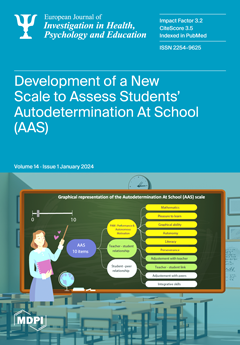Open AccessReview
Climate Change Perception and Mental Health. Results from a Systematic Review of the Literature
by
Vincenza Gianfredi, Francesco Mazziotta, Giovanna Clerici, Elisa Astorri, Francesco Oliani, Martina Cappellina, Alessandro Catalini, Bernardo Maria Dell’Osso, Fabrizio Ernesto Pregliasco, Silvana Castaldi and Beatrice Benatti
Viewed by 2406
Abstract
Climate change is one of the main global challenges and influences various aspects of human health. Numerous studies have indeed demonstrated an association between extreme climate-related events and physical and mental health outcomes, but little is still known about the association between the
[...] Read more.
Climate change is one of the main global challenges and influences various aspects of human health. Numerous studies have indeed demonstrated an association between extreme climate-related events and physical and mental health outcomes, but little is still known about the association between the perception/awareness of climate change and mental health. In accordance with the PRISMA 2020 guidelines, a search was conducted on PubMed and Scopus. The protocol was registered on PROSPERO. The included studies were original observational studies published in English, reporting the association between the perception/awareness of climate change and mental health. A total of 3018 articles were identified. A total of 10 observational studies were included. The period covered in the included studies ranged between 2012 and 2022. Climate change perception is consistently associated with adverse mental health effects across different types of estimates. In particular, the studies identified an association between a higher level of perception/awareness of climate change and depression, anxiety, eco-anxiety, stress, adjustment disorder, substance use, dysphoria, and even thoughts of suicide. Qualitative data underscore the impact on daily activities, contributing to feelings of loss and suicidal ideation. Moreover, climate change perception correlates with lower well-being and resilience. The association between awareness of climate change and mental health is a complex and still poorly explored phenomenon. The main limitations are the high heterogeneity in terms of exposure assessment and data reporting, which hinders quantitative analysis. These results show that climate change perception impacts mental health. Better understanding the phenomenon represents an opportunity to inform public health interventions that promote mental well-being.
Full article
►▼
Show Figures






